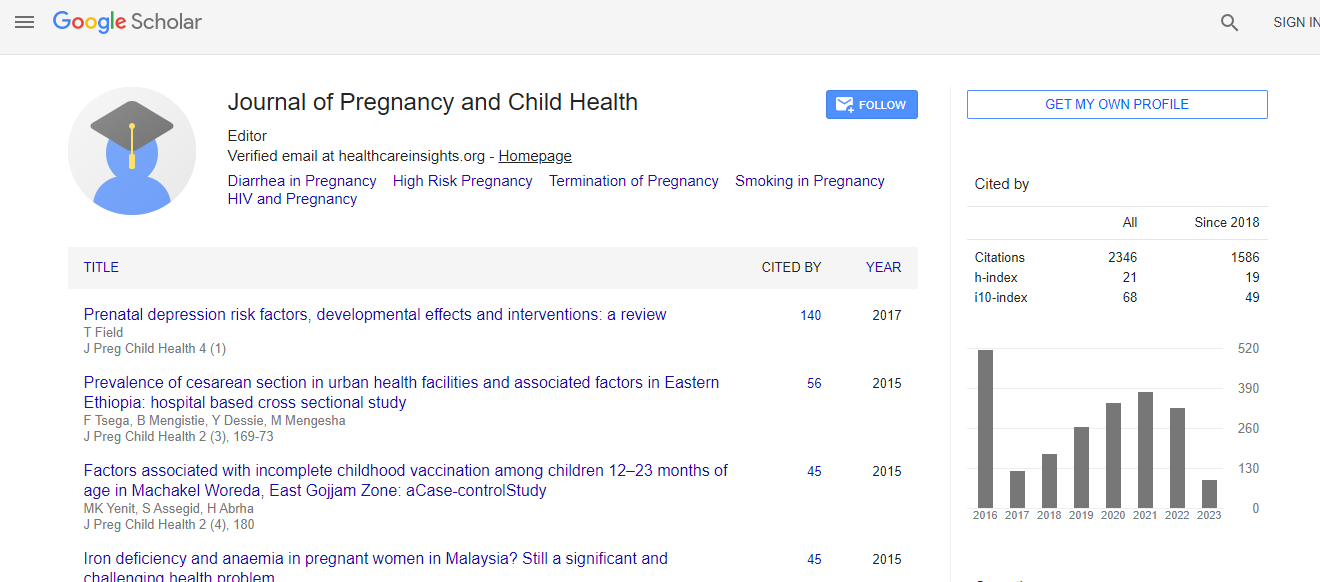Research Article
Community Based Magnitude of Obstetric Emergencies in Rural Women with Low Resources
strong>Chhabra S*
Department of Obstetrics Gynaecology, Mahatma Gandhi Institute of Medical Sciences, India
- *Corresponding Author:
- Chhabra S
Department of Obstetrics Gynaecology
Mahatma Gandhi Institute of Medical Sciences, India
Tel: 917152284341
E-mail: chhabra_s@rediffmail.com
Received date: December 02, 2016; Accepted date: February 22, 2017; Published date: February 27, 2017
Citation: Chhabra S (2017) Community Based Magnitude of Obstetric Emergencies in Rural Women with Low Resources. J Preg Child Health 4:303. doi:10.4172/2376-127X.1000303
Copyright: © 2017 Chhabra S, et al. This is an open-access article distributed under the terms of the Creative Commons Attribution License, which permits unrestricted use, distribution, and reproduction in any medium, provided the original author and source are credited.
Abstract
Background: Rural women with low resources do not get timely and appropriate care for obstetric emergencies. Awareness in women, communities about emergencies, action needed, helps in getting quick, right therapy for prevent ion of maternal, perinatal morbidity, mortality. Objective: To know community based numbers, types of emergencies for which rural women sought care during pregnancy, labour, postpartum. Methodology: Present article is based on analysis of records of women who sought referral care for emergencies during pregnancy, labour, postpartum from communities of 53 villages with low resources, being served through nurse midwives. Results: Of 10117 births in 53 villages during analysis period, 656 (6.48 %) women sought emergency care. 458 (7.52% of 6087 births) were from nearby villages, being served since more than two and half decades (called old), 198 (4.91% of 4030 births) from far off villages, being served since around one and half decade (called new). Emergency services were for placental abruption, hypertensive disorders, obstructed labour (due to cephalopelvic disproportion or abnormal presentation), non-progress of labour or postpartum haemorrhage, with no significant change over years. Maternal deaths due to pregnancy, labour, post-partum complications have been almost eliminated. Perinatal mortality has reduced, though it is still high. No woman reported with septic abortion or rupture uterus in last decade. In old villages, 44% were home births between 1987-1990, 6.2% between 2011-2014. In new 38.2% were home births between 1996 to 1999 and 12.40% between 2011-2014. Conclusion: Nurse midwives can do a lot for prevention of fatal emergencies, maternal, perinatal deaths with some limitations. About some disorders more information is needed for best of heal7th of women. Research needs to continue.

 Spanish
Spanish  Chinese
Chinese  Russian
Russian  German
German  French
French  Japanese
Japanese  Portuguese
Portuguese  Hindi
Hindi 
